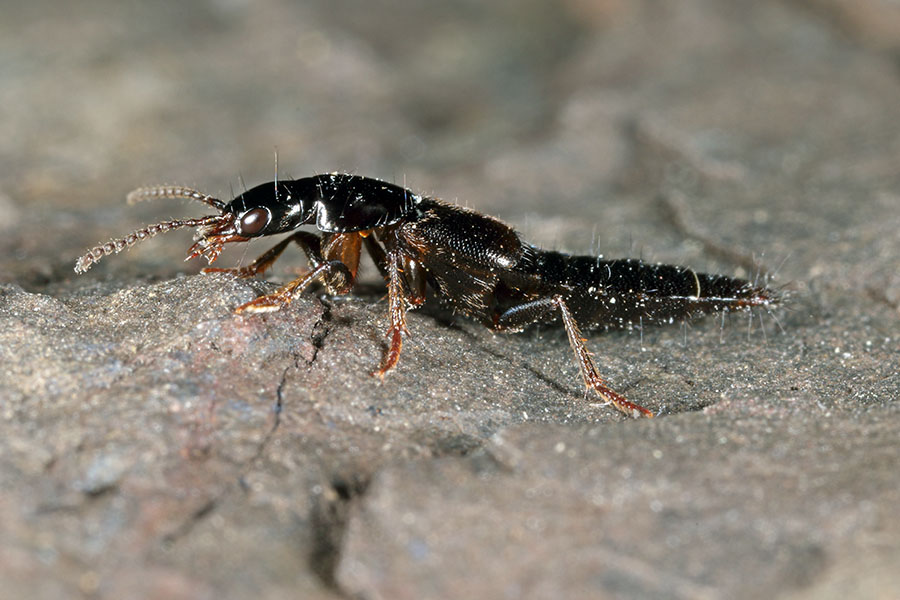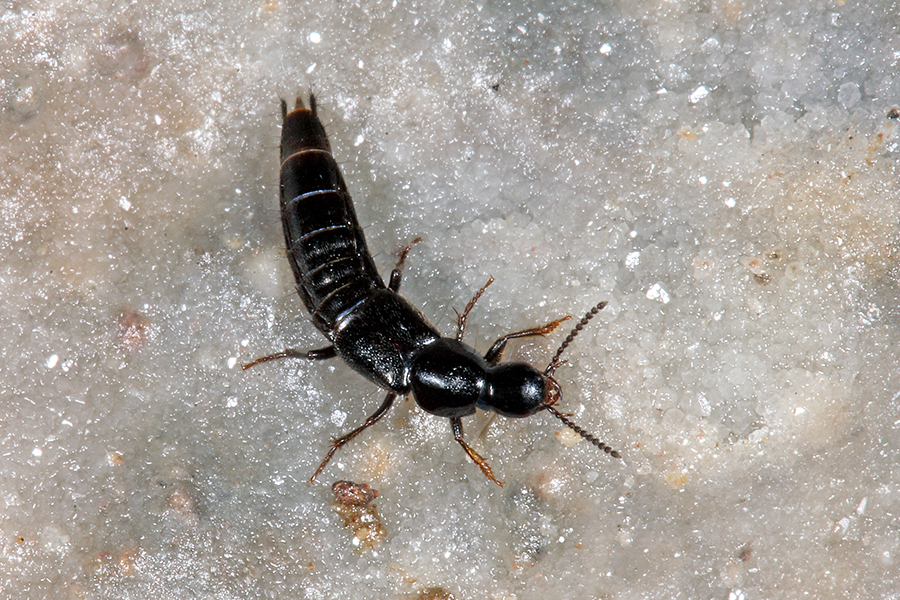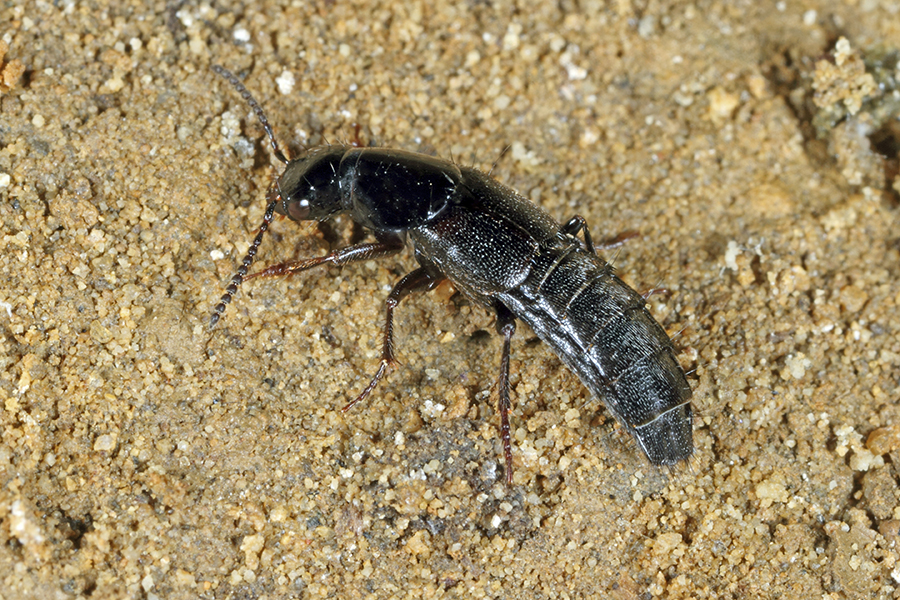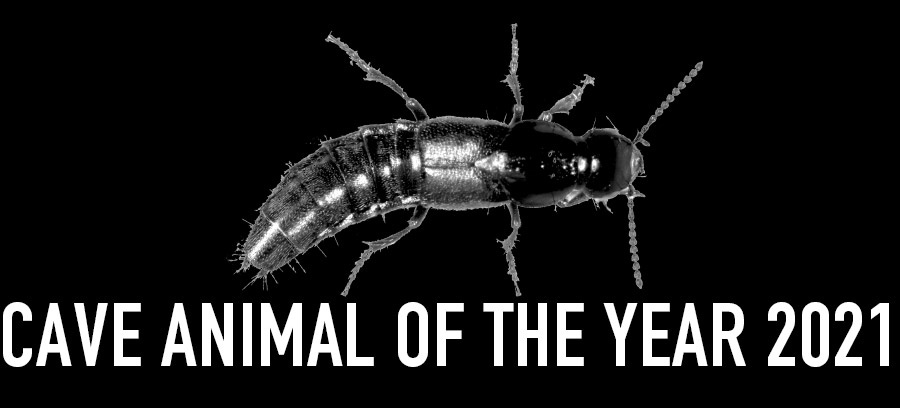
Cave Rove Beetle - Cave Animal of the Year 2021
Introduction
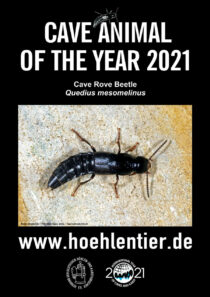
The International Year of Caves and Karst 2021 is intended to draw attention to the protection worthiness of karst landscapes and their diverse karst phenomena with a series of publicity campaigns. One of these actions is the selection of an international "Cave Animal of the Year". For this purpose, the group of cave beetles was selected from which each participating country can choose a regionally occurring cavernicole beetle species and present it to the public and the authorities as the "Cave Animal of the Year". With the selection of the cave beetle, the German Speleological Society wants to point out that there is still an enormous need for action, especially in the research of underground ecosystems and the species occurring therein.
The Cave Rove Beetle (Quedius mesomelinus) was described in 1802 by the British entomologist Thomas Marsham. The species belongs to the rove beetles (Staphylinidae). As a common feature, rove beetles have an elongated body with shortened wing covers (Elytra), so that the abdomen remains largely uncovered.
Cave Rove Beetles are found all year round in natural caves, mine tunnels and rock cellars, where they regularly form solid populations. This fact led to the fact that this beetle species was chosen as the "Cave Animal oft he Year 2021". The short-winged beetle stands for a large number of animal species that depend on protected and frost-free retreats underground.
Description
The wing covers of the Cave Rove Beetle are shiny black, dotted. Below them are the strongly folded wings. The legs and the antennae are somewhat brighter than the rest of the body. Cave Rove Beetles grow up to 11 mm long and live predatory from different invertebrate species. They regularly prey on decomposing organic material such as dead wood or dung. Here they hunt for insect larvae, small flying insects and springtails. Also fungus-plait serves them as food-source.
The animals can be found all year round in the litter leaf layer of forest areas, in small mammal constructions and in underground habitats such as caves, cellars or tunnels. The species is considered to be particularly cold-tolerant. The likewise predatory living beetle larvae pupate to a dark yellow to reddish-brown, about 6 mm long pupa. In caves, the Cave Rove Beetle can be found on the ground in the foliage, under stones, on cave walls, on dead wood or on bat guano, far into the depths.
Distribution
The beetle is widespread in Europe, Asia and North Africa. It has been distributed by humans in Greenland, North and South America and the Australian region. In Central Europe it is mainly found in mountainous regions.

